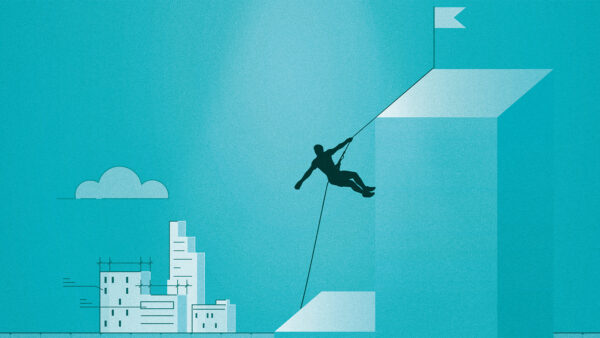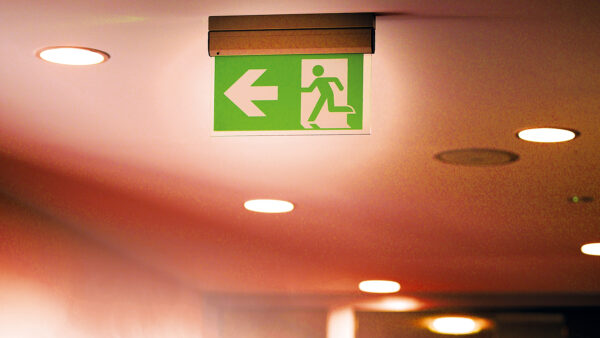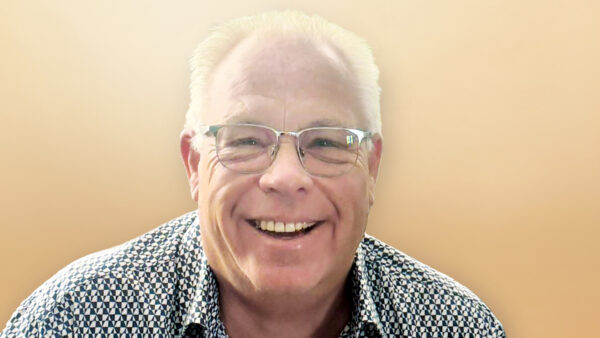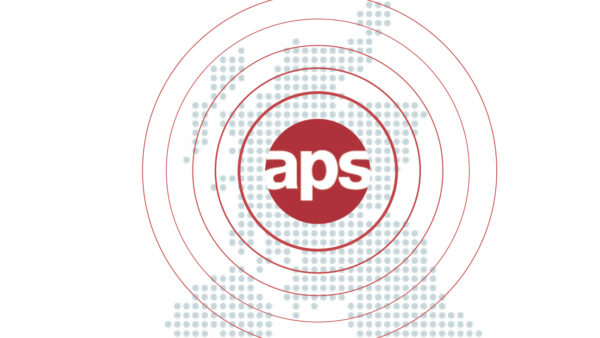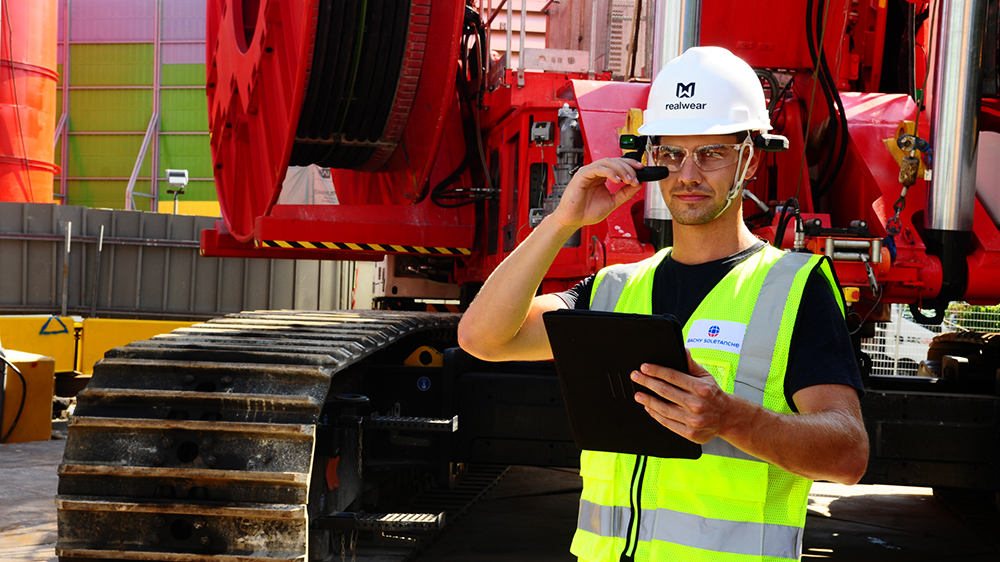
Bachy Soletanche is using mixed reality to bring safety expertise to its major projects around the world. But new technology can bring new safety challenges too, reports Kristina Smith.
According to Stuart Brooks, HSSE manager for Bachy Soletanche International, visibility on site is a core ethos. “We spend a significant amount of time on projects with the teams,” says Brooks.
With projects that range from deep metro stations to major rail projects to ports to damns, Bachy Soletanche’s teams are invariably working with contractors from multiple countries – all with a different safety culture. The impact of this dynamic is difficult to assess from afar, explains Brooks. However, when Covid-19 pandemic put paid to international travel, site visits became an impossibility.
Brooks turned to technology: ‘extended reality’ headsets which would allow managers from anywhere in the world to visit sites virtually. The sets are already proving useful from a safety perspective – and Brooks hopes that they will provide other benefits too.
The tech
Bachy Soletanche purchased eight RealWear HMT-1 headsets which it distributed to sites in New Zealand, Singapore, Canada, US and Ecuador – as well as retaining two within the safety team.
The headsets combine a camera and microphone on a horizontal headband that fits round a hard hat, with a small screen at the end of a boom which sits on the cheek below the user’s dominant eye. The wearer can see what they are transmitting on the small screen, and by voice command can change the view to display the screen of the person they are communicating with.
“We have had to identify specific champions and train them up remotely. It’s a battle to get people to change.”
Introducing new tech in lockdown meant that training and persuasion had to be done from a distance too – rather than in person. “We have had to identify specific champions and train them remotely,” says Brooks. “It’s a battle to get people to change. They automatically put barriers up.”
Bachy Soletanche also faced technical problems, mainly with connectivity which varies hugely from site to site; some of the projects are in very remote locations.
At first, they used Teams with the headsets but the quality of calls was intermittent, says Brooks.
He turned to SimplyVideo. “They have a tool which can work with different levels of bandwidth, depending on the quality of the call,” he explains. SimplyVideo also advises on points of presence (POPs) – which satellites or device the teams should be using to communicate between themselves with.
Now that Bachy Soletanche is beginning to get a handle on the connectivity challenge – with support from SimplyVideo – managers from around the world can drop in virtually on the company’s international sites. Calls can be recorded and aspects of them shared with other people to ask for feedback or advice, says Brooks. For instance, the tender managers based in Bachy Soletanche’s Paris office have huge levels of experience which can now be transferred to teams wherever they are in the world.
There have already been safety wins, says Brooks. He gives the example of a site in Singapore where the rebar cages for piles were being spliced from an elevated platform. Although the platform had good edge protection, there were no toe boards which meant that there was the risk of toes being bashed by the cages as they were lowered down. This was spotted by someone remotely and rectified within hours.
New hazards?
Just as talking in the car, even on hands-free, is distracting, surely walking round site in a headset puts the user at risk? Experiences from the manufacturing sector certainly suggest that this is the case (see below).
With the screen for the RealWear headset below the wearer’s line of sight – as opposed to right in front of one’s eyes, as in a HoloLens headset or similar – Brooks assesses the risks related to using the headset on site as similar to those of walking round using a mobile phone. Users have to be aware and responsible, he says.
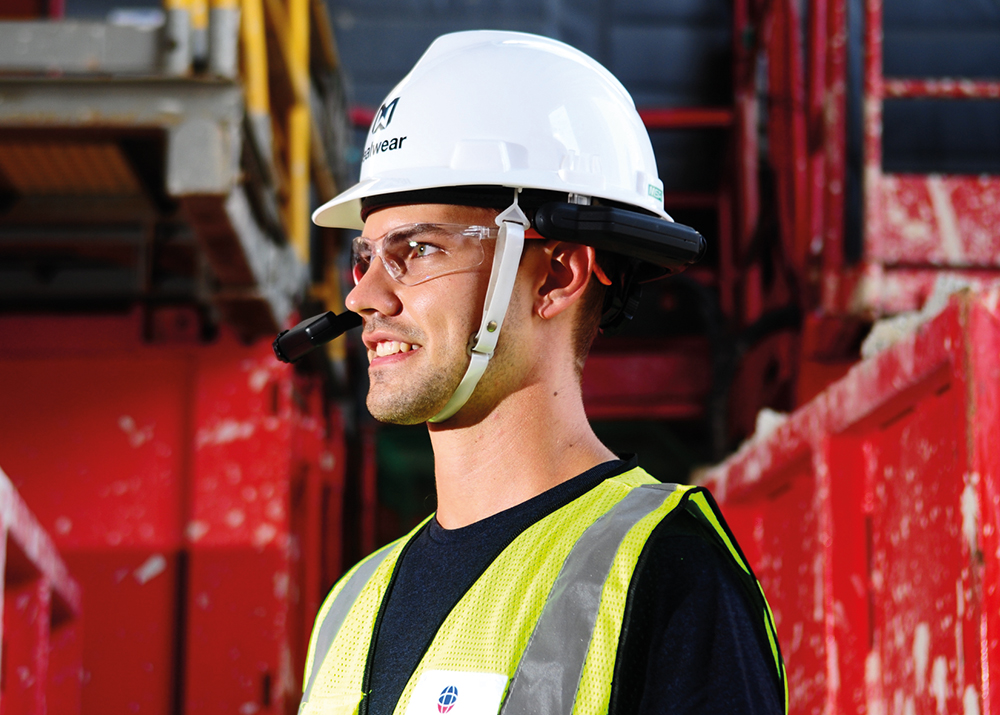
“Yes, there are risks but, as in every aspect on site, they can be managed effectively with simple initiatives at site level,” he says.
Brooks hopes that the use of the technology for virtual site visits will soon expand. From a safety perspective, it could be used to reinforce Bachy Soletanche’s 20-20-20 fatal risk reviews for dangerous environments such as tunnels: every 20 minutes, stop for 20 seconds and assess any risks within 20 feet. He also thinks that local teams will start to find new uses which demonstrate very tangible returns on investment:
“We are at the start of our journey,” he says. “I can see the tool developing into a mentoring tool or an operational tool that can be used by the plant and equipment managers, or a quality control and assurance tool for the quality team.”
Lessons from aerospace
Research and experiences from manufacturing show that the use of mixed-reality headsets can distract users.
Michael Lewis, now director of engineering at virtual reality (VR) training provider Edify, researched the impact of mixed reality when he was at Sheffield University, looking at how workers on a standard assembly process performed with and without Microsoft HoloLens headsets.
“We did find that there was a difference between those wearing the HoloLens and those that were not,” says Lewis. “It makes a difference to how people perceive the environment around them.”
Lewis flags up the experience of Boeing, which is well advanced with the use of headsets and mixed reality in its BARK (Boeing Augmented Reality Kit) programme. Boeing has set up its system so that its augmented reality devices switch off as soon as the user starts to move.
“We turn all the displays off whenever the user is walking, especially on head-worn designs. You don’t want any distractions in a factory environment where there could be hazards around,” says Paul Davies, technical fellow – immersive technologies at Boeing, in a YouTube video.
The same logic must apply to a construction site – perhaps even more so, since hazards move and change.






